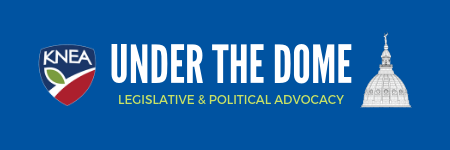The Governor’s Council on Tax Reform held a one day meeting this week during which they heard from various groups and received more interesting data from their lead academician, Dr. Donna Ginther.
Most of the testimony was not new but rather a rehash of arguments made before the tax committees every year. The Kansas Chamber of Commerce argued for changes to corporate taxes, specifically the GILTI and repatriation issues that they argue are needed because of the consequences of the Trump tax reform bill. Realtors argued for allowing Kansas individuals to itemize on their taxes even if they use the federal standard deduction – especially for those who might wish to deduct mortgage interest and property taxes paid. Several groups argued for changes in the food sales tax, either reducing it, eliminating it, or putting a refundable tax credit in place.
Also discussed was the Wayfair decision that allows states to require online vendors to collect and remit sales taxes on any purchases made by the state’s residents.
Dr. Ginther presented very detailed and fascinating information on the “three-legged stool” of tax policy. Much has been said about the benefits of balancing the three main sources of tax revenue: sales, property, and income. Back in 1998, Kansas was in near-perfect balance with sales taxes accounting for 28.1% of state revenue, income taxes for 28%, and property taxes for 30.9%.
Passage of the disastrous Brownback tax experiment resulted in a serious un-balancing of the system. By 2017, the year the Brownback plan was reversed, sales taxes accounted for 31.2% of state revenue, income taxes for 19.4%, and property taxes for 37.1%.
As of today, Kansas is slowly restoring balance with sales taxes in 2019 accounting for 28% of state revenue, income taxes for 26.5%, and property taxes for 34.3%. This demonstrates, of course, that elections matter. In 2016, voters ousted many of Brownback’s allies who supported the “experiment” and a new, more moderate legislature, reversed the Brownback plan.
Ginther’s presentation also clearly showed how taxes can be “regressive” – harder on low income individuals than the wealthy – or “progressive” – rising with income.
The sales tax is the most regressive tax with the top 1% of earners paying 1% of their income to sales taxes while the lowest 20% of earners pay 8% of their income to sales taxes. The income tax in Kansas is “moderately progressive” with the lowest 20% of earners actually getting small refunds (they pay -0.5% of income) and the wealthiest 1% of earners paying 4.4% of their income in income taxes. Property taxes are somewhat regressive in that the lowest 20% of earners pay 3.9% of income in property taxes while the top 1% pay 1.8% of income in property taxes. The bulk of earners all pay between 2.3% and 2.8% of income in property taxes.
CLICK HERE to access Dr. Ginther’s presentation on the history of the three-legged stool in Kansas.
Much of the committee discussion focused on one of the most followed tax issues in Kansas – the food sales tax. Kansas has the second highest food sales tax in the nation. Our neighbors all have lower rates; Colorado and Nebraska have no food sales tax, Missouri has a rate of 1.22%, and Oklahoma has a rate of 4.4%.
At issue for the Council is whether Kansas would be better off to lower or repeal the food sales tax which would give a benefit to everyone with a disproportionately higher benefit to the wealthiest or to target relief to low income individuals and families by reinstating a refundable food sales tax credit. It would appear that the targeted relief might have more support on the Council but it’s hard to tell.
The Council will meet again on December 3 and 4 when they plan to adopt a set of recommendations for Governor Laura Kelly to consider for the 2020 legislative session.
CLICK HERE to find all of the meeting materials – presentations and testimony.


